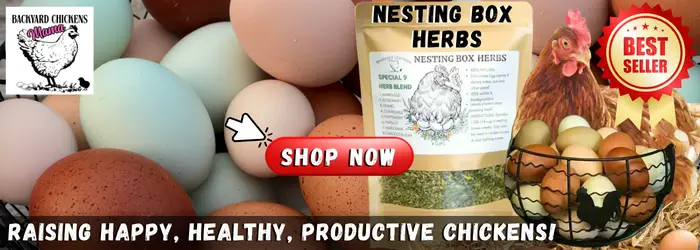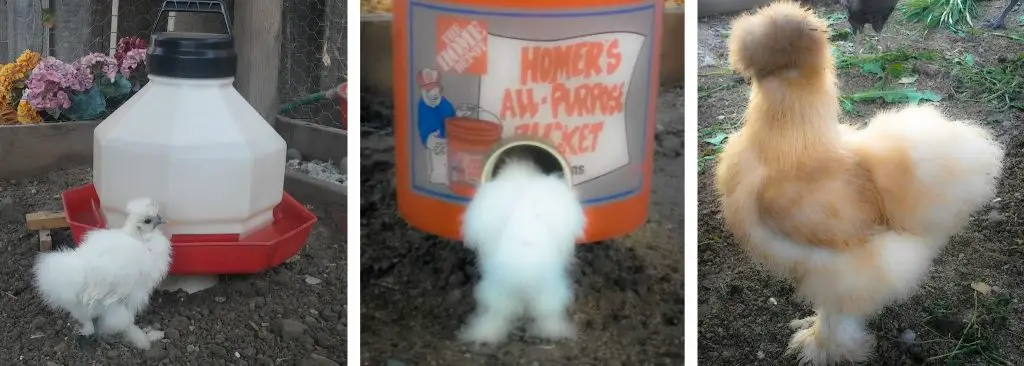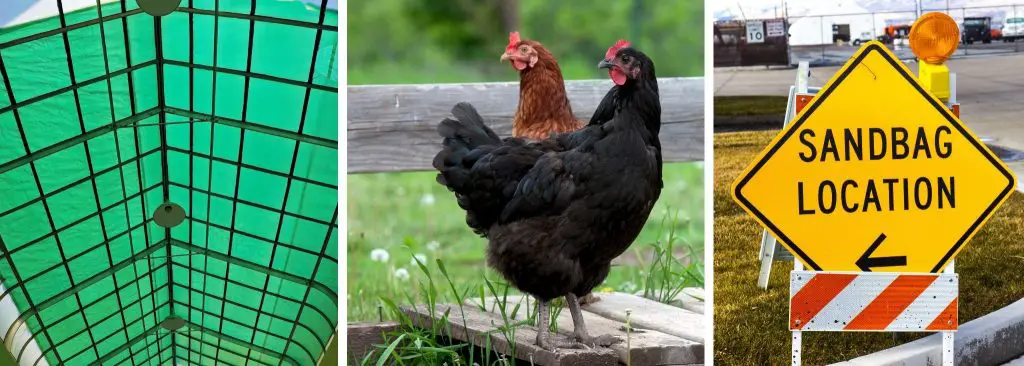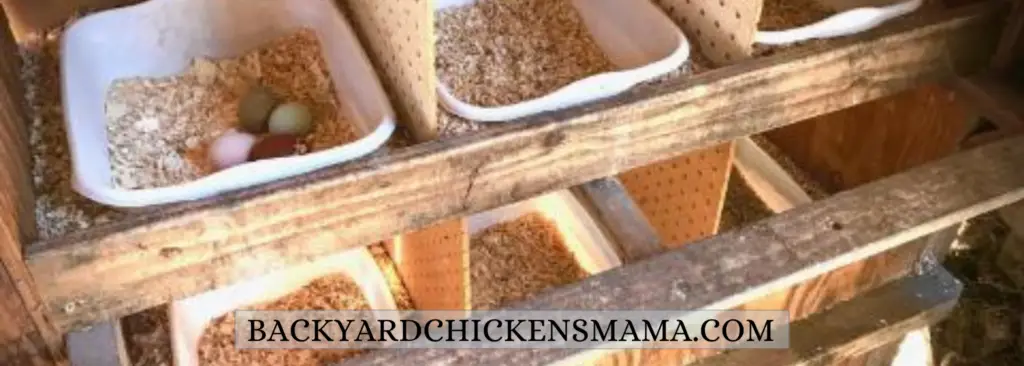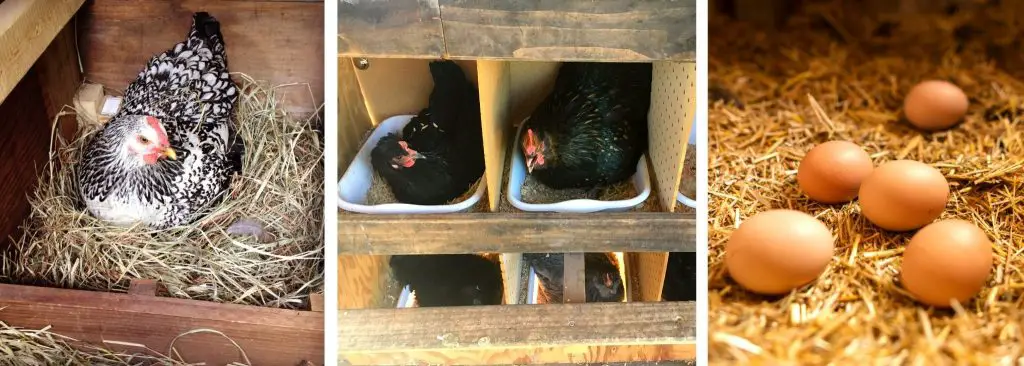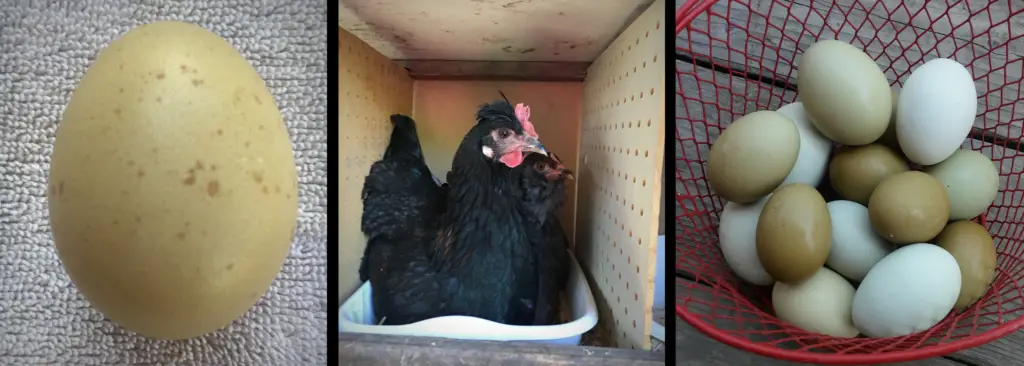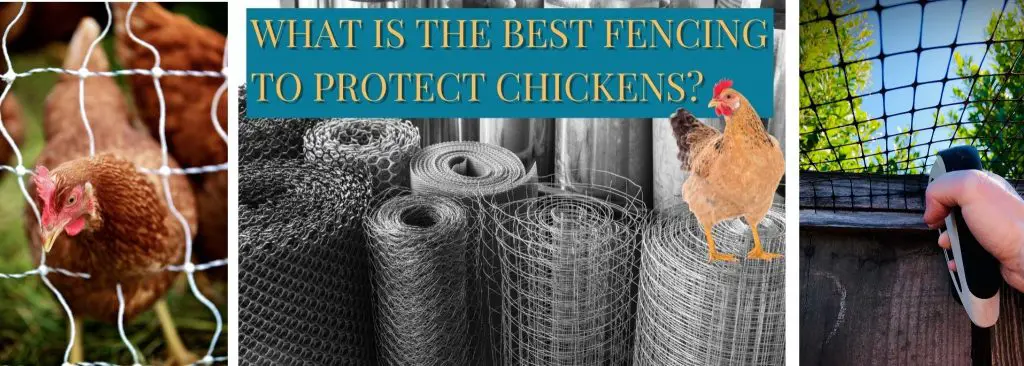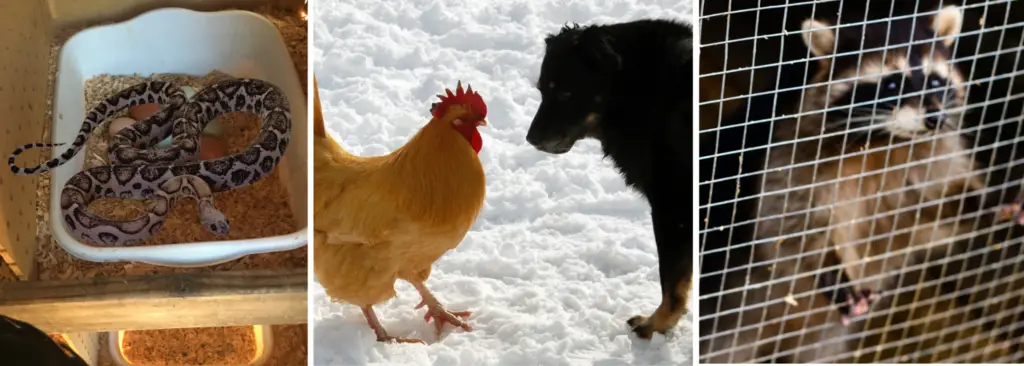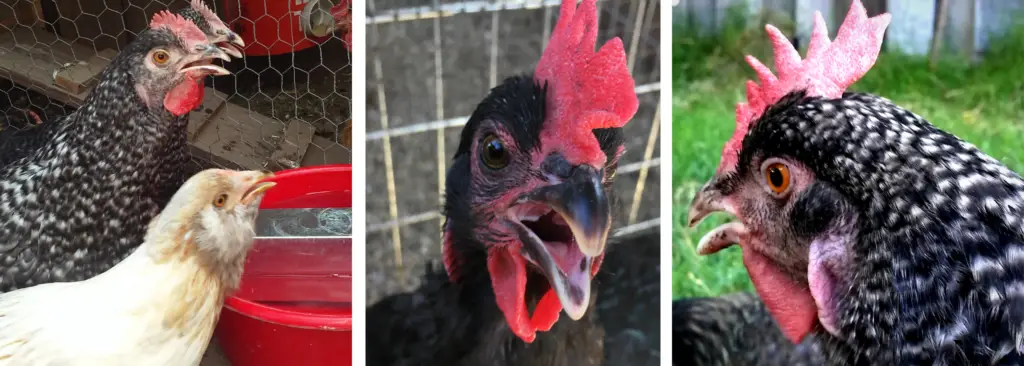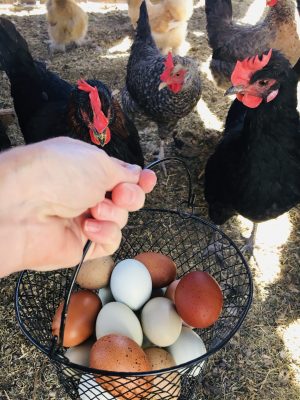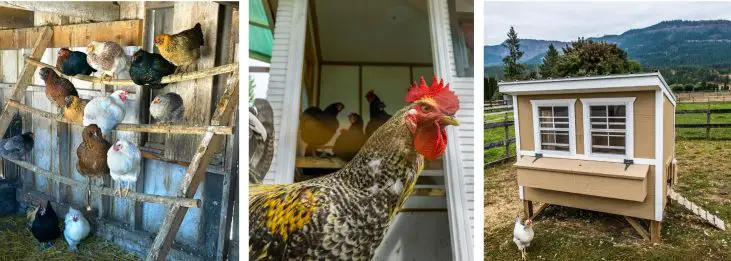
One of the best ways you can make your chickens feel good about going into the coop is by providing a safe, secure and healthy environment inside the chicken coop for them. There are 11 important things every chicken coop should have to fulfill a chickens needs.
A happy chicken will show you by providing an abundance of eggs!
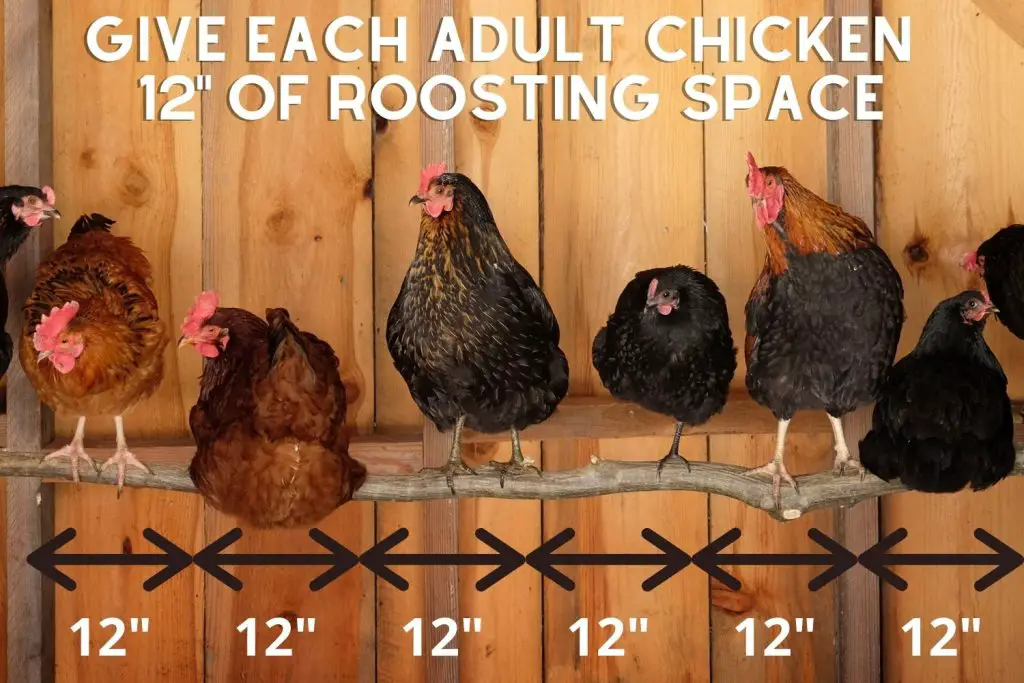
- 1. Roosting Bar Requirements for Chickens
- 2. Coops Need Proper Ventilation
- 3. Choose a Good Bedding Material for Your Chicken Coop
- 4. Make Sure You Have the Right Number and Size Nesting/Laying Boxes
- 5. Install a Secure Chicken Coop Door
- 6. Adequate Size Coop and Run for Your Flock
- 7. Chickens Need Protection from the Elements
- 8. Make Sure Your Chickens are Secure Against Predator Attack
- 9. Shade for Chickens to Keep Cool on Hot Days
- 10. Proper Number and Type of Feed and Water Containers
- 11. Oyster Shell Dispenser for Laying Hens
- CONCLUSION: 11 Important Things Every Chicken Coop Should Have
1. Roosting Bar Requirements for Chickens
How Much Roosting Space Does Each Chicken Need?
Provide enough roosting bars so each adult chicken has at least 12 inches of roosting space. Bantam and younger chickens require a little less space, at around 8 inches. Larger breeds, such as the Giant Cochin and Jersey Giants require a little more roosting space, at around 16 inches.
What is the Propers Size Roosting Bar for Chickens?
Chickens prefer to sleep with their feet flat on a surface, not wrapped around. The best sized roost is between 2-4 inches in width. Bantam breeds will do just fine with a 2″ roosting bar. Regular size and giant breed chickens do well with a 4″ roosting bar.
Chickens prefer to relax on a flat surface at night. When they have to wrap their toes around a roosting bar, they have to work harder to balance. With flat roosting bars they are less likely to loose balance in the night and fall of the roost.
How High Should Chicken Roosting Bars Be?
Never place a roosting bar higher than 4 feet off the ground and always provide roosting bars for chickens to jump down from. This will help to decrease the chances of a chicken breaking its leg or developing bumblefoot.
Also, the lowest roosting bar should be higher than the highest set of nesting boxes. This will help to prevent your chickens from roosting inside of the nesting boxes. (Chickens instinctively always seek out the highest place to roost.)
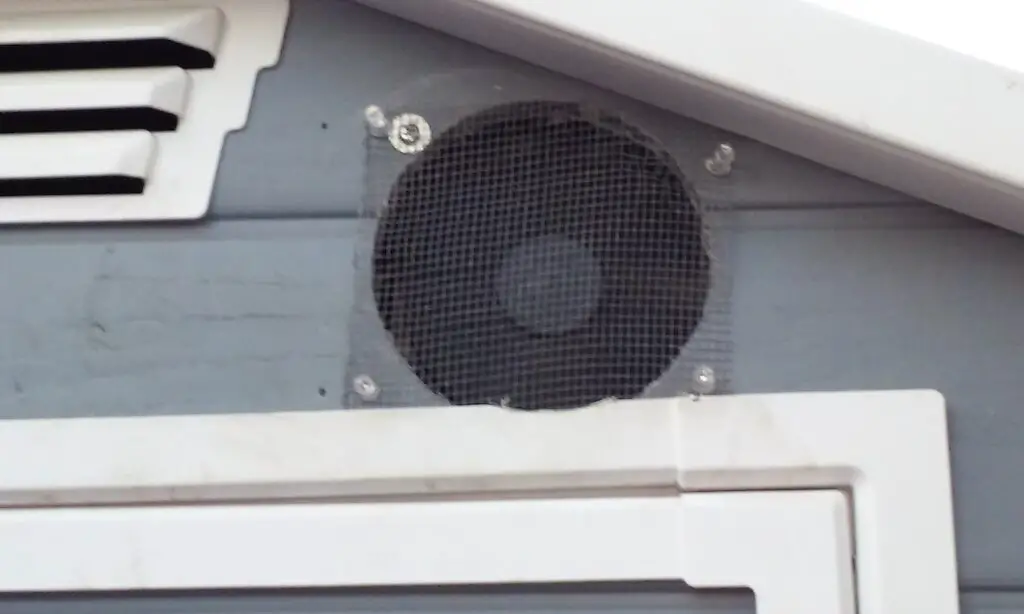
2. Coops Need Proper Ventilation
A chicken coop that doesn’t have proper ventilation is likely to have moisture build up inside. This causes heavy ammonia fumes, increased bacterial growth and an increased likelihood of chickens developing frost bite on their combs, wattles or feet during cold winter nights.
For the health of your chickens, it is important to provide adequate ventilation. This can be done by adding vents or mini size fans.
How Much Ventilation Does a Chicken Coop Need?
A chicken coop should have at least 1 square foot of ventilation for every 10 square feet of coop floor space. So, a chicken coop that is 10 feet long by 3 feet wide should have a minimum of 3 square feet of ventilation. In other words, it would need 3 vents that are 1′ x 1′.
3. Choose a Good Bedding Material for Your Chicken Coop
Bedding is needed for the floor of your chicken coop and for the nesting boxes.
Bedding in the nesting boxes provides a comfortable spot for your hens to lay her eggs in and a soft material for the eggs to land on.
I have found that my chickens prefer the softer bedding such as large or small flake pine shavings or hay/straw for their laying boxes.
Bedding on the coop floor absorbs the moisture from chicken poop, helps to keep the chicken poop odor and ammonia smell down and provides a nice landing space for chickens that jump from their roosting bars.
What to Put on the Floor of a Chicken Coop?
There are several choices of bedding material available and can be found at your local feed, hardware store and even in your own backyard!
| COMMON BEDDING MATERIALS FOR CHICKEN COOPS |
|---|
| PINE SHAVINGS (LARGE OR SMALL FLAKE) |
| SAND |
| HAY/STRAW |
| GRASS CLIPPINGS |
| SHREDDED PAPER |
| LEAVES |
| WOOD CHIPS |
| PINE PELLETS |
4. Make Sure You Have the Right Number and Size Nesting/Laying Boxes
How Many Nesting Boxes do I Need?
The general rule of thumb with nesting boxes is to have 1 nesting box for every 3-4 laying hens. It is better to have too many than not enough. And as any chicken owner will tell you, your hens will pick a select few favorite laying boxes and impatiently wait in line like girls at the bathroom!
What is the Proper Size for a Nesting Box?
A nesting box for an adult chicken should be 12″ x 12″ x 12″. For bantam breeds, they can be a little smaller and giant breeds, slightly larger. If you make your nesting boxes too big, you are likely to have several hens trying to lay at once in the same box.
5. Install a Secure Chicken Coop Door
Is it OK to Leave a Chicken Coop Door Open Overnight?
It is always best to close your chicken coop door each night. There are many nighttime chicken predators, such as raccoons, fox, opossums, skunk, coyotes, rats, snakes and bear. By locking up the coop each evening, this will help to protect your chickens from predator attack.
If you are unable to or are finding that you forget to go out to the coop each evening to close the coop door, consider getting an automatic chicken coop door.
They are simple to install, have really come down in price over the years and are SO convenient to have.
Automatic chicken coop doors will make your coop a lot more secure. You can set it to automatically open in the morning and to go down at dusk each evening!
6. Adequate Size Coop and Run for Your Flock
How Much Space do Chickens Need?
An adult size chicken needs a minimum of 4 square feet of inside coop space. Bantams require 2-3 square feet of inside coop space. A full size chicken requires a minimum of 10 square feet of outside coop space. Bantams and younger chickens require a minimum of 8 square feet of outdoor coop space.
| ADULT CHICKEN MINIMUM SPACE REQUIREMENTS | BANTAM CHICKEN MINIMUM SPACE REQUIREMENTS |
|---|---|
| INSIDE COOP: 4 SQUARE FEET | INSIDE COOP: 2-3 SQUARE FEET |
| OUTSIDE COOP: 10 SQUARE FEET | OUTSIDE COOP: 8 SQUARE FEET |
7. Chickens Need Protection from the Elements
A chicken coop should protect a chicken not only from predators, but also from rain, snow, wind and the sun.
All coops should have a roof and 4 walls for protection from the elements. A chicken run should have at least a partial area that provides shade and protection from the elements.
Consider putting up a tarp or temporary wall on one side during rainy or windy times.
Chickens should have a dry chicken coop and chicken run. Moisture breeds bacteria and diseases and can make your chickens sick. Make sure that you take necessary precautions to avoid having a muddy chicken run.
8. Make Sure Your Chickens are Secure Against Predator Attack
Find out what type of predators are common in your area and take whatever precautions are necessary to protect them. For details on how to prevent each of the common predators from attacking your chickens, read my article 11 Common Backyard Chicken Predators- How to Best Prevent Attacks. See link below:
Chicken wire will keep your chickens from getting out of the chicken run, but it will NOT keep predators out. 1/4″ or 1/2″ hardware cloth is better suited to keep many nighttime chicken predators out.
| PREDATOR | % BACKYARD CHICKEN OWNERS REPORTED ATTACKS (2,660 VOTES) |
|---|---|
| RACCOON | 25.3% |
| HAWKS, OWLS, EAGLES | 19.4% |
| DOG | 15% |
| FOX | 11.7% |
| COYOTE | 5.1% |
| WEASEL | 4.7% |
| MAN | 3.7% |
| MINK | 2.5% |
| OPPOSUM | 2.3% |
| BOBCAT | 2% |
| CAT | 1.9% |
| RAT | 1.9% |
| BEAR | 1.7% |
| SNAKE | 1.2% |
| SKUNK | 0.9% |
| MOUNTAIN LION | 0.6% |
9. Shade for Chickens to Keep Cool on Hot Days
A chicken cannot sweat, so it is up to us to help provide an environment that can help them keep cool during extreme heat. This can easily be done by providing shelter and fresh, cool water throughout the day.
How do I Know if My Chickens are Too Hot?
Because a chicken cannot sweat, it will pant and spread its wings away from its body in effort to cool down. They may seek out a cool spot in the dirt to cool off.
During really hot weather, if a chicken becomes overheated it may lay less eggs, lay mis shaped eggs, develop a dry, pale comb and wattle, eat less, become lethargic and may develop diarrhea.
You can help to cool them down by allowing them access to fresh, cool water throughout the day and providing extra protection from the sun.
| SIGNS OF HEAT STRESS IN CHICKENS |
|---|
| PULLS ITS WINGS AWAY FROM ITS BODY IN ATTEMPT TO COOL DOWN |
| OPEN MOUTH, PANTING |
| DECREASE IN EGG PRODUCTION |
| PALE, DRY COMB AND WATTLE |
| MIS SHAPED EGGS |
| EAT LESS |
| DEVELOP DIARRHEA |
| BECOME LETHARGIC |
10. Proper Number and Type of Feed and Water Containers
The average adult chicken will drink about 1 pint of water per day and up to 2 pints on a hot day. The amount of waterers necessary will depend upon the size of your waterers. It is recommended to have at least two water stations for large flocks. This will minimize fighting.
| TYPES OF CHICKEN WATERERS | RECOMMENDED |
|---|---|
| GRAVITY FED | “FARM TUFF” 5 GALLON WATERER |
| AUTOMATIC | “LITTLE GIANT” AUTOMATIC FEEDER |
| CONTAINERS | “FARM INNOVATORS” 1.5 GALLON HEATED WATER BOWL |
The average adult chicken will eat 1/4 lb of chicken feed per day or 1.5 lbs per week. So to feed a flock of 12 adult chickens for a month, you will need 72 lbs of chicken feed.
For larger flocks, it is recommended to have at least two feeding stations. This will minimize fighting.
| TYPES OF CHICKEN FEEDERS | RECOMMENDED CHICKEN FEEDERS |
|---|---|
| GRAVITY FED | “RENTACOOP” 20 GALLON FEEDER |
| TREADLE FEEDERS | “RENTACOOP” 25 LB TREADLE FEEDER |
| TROUGH FEEDERS | “MILLER MANUFACTURING” 48″GALVANIZED POULTRY TROUGH |
| CONTAINER | DOLLAR STORE SELLS A STURDY PLASTIC OIL CATCH PAN THAT WORKS GREAT FOR THIS! |
| SCATTER BY HAND USING A SCOOP | “LITTLE GIANT” FEED SCOOP |
11. Oyster Shell Dispenser for Laying Hens
Laying hens need to be supplemented with additional calcium in order to keep up with egg laying. This should be offered in a separate container and not mixed with their regular feed.
Roosters, growing pullets and non-laying hens do not require increased calcium.
Chickens instinctively know how much calcium that their body needs and will consume only as much as is necessary to replenish what is lost with egg laying.
“Chickens require calcium in their diet and when hens begin to lay require 2.5%- 3.5%. Growing pullets should only receive around 1.2%. This is why it is important to feed your chickens the proper feed for their age.”
11 Secrets that Will Get Your Chickens Laying More Eggs

DISPENSER
DIY Chicken Oyster Shell Feeder
Instructions to make your own diy chicken oyster shell dispenser:
| MATERIALS NEEDED FOR OYSTER SHELL DISPENSER |
|---|
| 2 FEET OF 3-4″ ABS PIPE (OR SIMILAR PIPE) |
| 3 or 4″ CAP |
| 6″ ABS CAP |
| DRILL |
| 2 SCREWS |
| HOOK TO HANG DISPENSER ON |
| SAWZALL |
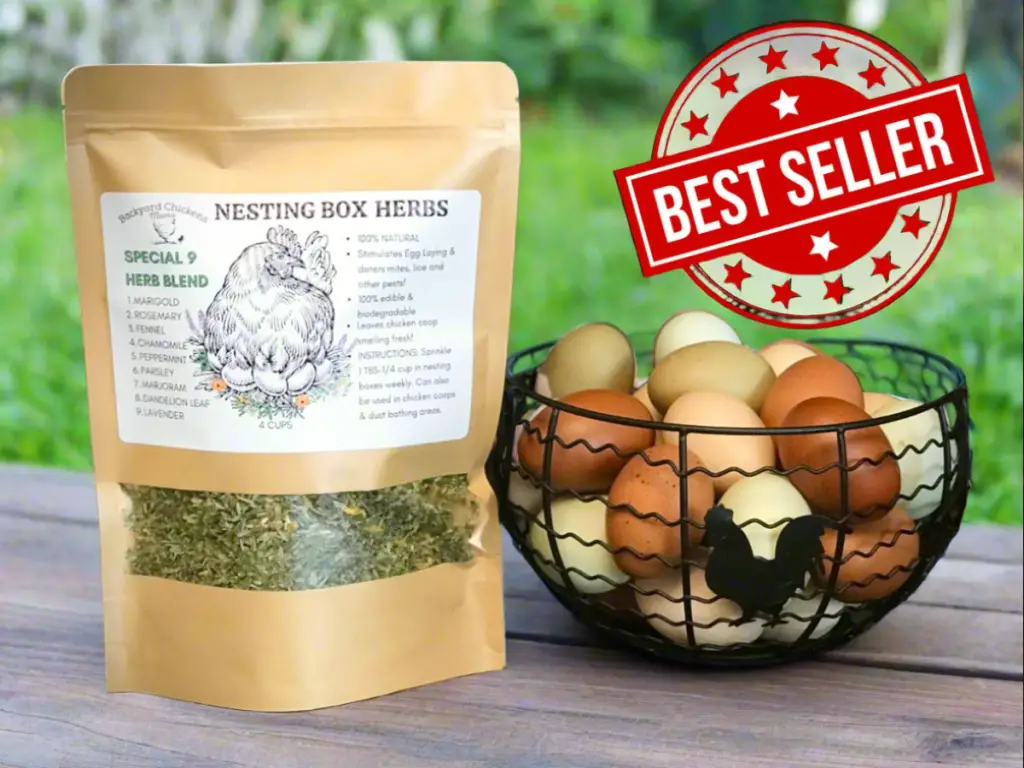
Increases egg laying naturally.
- Improves chicken health.
- Deters parasites: mites, lice, fleas & flies as well as mice, rats, raccoons, coyotes, opossums and more!
- On SALE!
- Shop: Nesting Box Herbs
CONCLUSION: 11 Important Things Every Chicken Coop Should Have
There are 11 important things every chicken coop should have. These items will provide your chickens a safe, secure and healthy environment.
- Roosting bars should provide enough roosting space and be of proper design and height.
- Provide 1 square foot of ventilation for every 10 square feet of coop flooring space.
- Use a good bedding material for the floor and nesting boxes. This will help to absorb moisture, decreasing smell, bacteria and chances of chickens developing frostbite.
- Provide a sufficient number of laying boxes and make sure that you place them lower than the lowest roosting bar. High nesting boxes are likely to encourage roosting in the boxes. Chickens that roost in their nesting boxes are very likely to poop in them.
- Secure chicken coop door that you lock each night.
- Provide an adequate size coop and chicken run.
- Protection from rain, snow, wind and sun.
- Protection against predator attack. Consider using hardware cloth instead of “chicken wire.” Chicken wire is designed to keep chickens in, not predators from getting in.
- Provide sufficient shade for your chickens.
- Make sure you have enough feed and water containers. Chickens are less likely to bully and peck each other if they have enough space to eat and drink.
- Laying hens need to be provided oyster shell in a separate dispenser.
